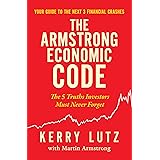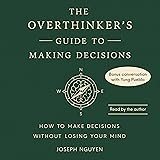Understanding whether gold truly stands as a worthwhile investment often comes down to a direct comparison with other asset classes over time. The video above effectively illustrates this point by contrasting a $1,000 investment in gold with the same amount placed into the S&P 500 back in 1989. This historical snapshot provides a compelling starting point for evaluating the long-term potential of precious metals versus broad market equities.
Gold vs. S&P 500: A Historical Performance Snapshot
As the video highlights, if you embarked on an initial gold investment journey with $1,000 in February 1989, purchasing gold at $389 per ounce, you would have acquired approximately 2.57 ounces. Fast forward to the present, with gold hovering around $2,000 per ounce, that initial investment would now be valued at just over $5,000. This represents a substantial gain, certainly, but let’s consider the alternative.
Conversely, investing that same $1,000 into the S&P 500 around the same time, when it opened at just over $297, would have secured you roughly 3.36 shares. With the S&P 500 currently trading above $4,000, those shares would be worth an impressive $13,806. The stark difference of over $8,000 in favor of the S&P 500 undeniably demonstrates its superior capital appreciation over this 30-plus year period.
Understanding the S&P 500’s Edge in Long-Term Growth
The S&P 500 isn’t just a single stock; it’s an index representing 500 of the largest U.S. publicly traded companies. This inherent diversification across various sectors provides a robust foundation for consistent growth. Think of it like a carefully curated garden, where different plants grow at different rates, but the overall ecosystem thrives.
Companies within the S&P 500 are innovators, creators, and drivers of economic progress. Their growth often translates into increased earnings, which in turn can lead to higher stock prices and, for many, dividend payments. These dividends, often reinvested, create a powerful compounding effect, allowing your money to grow exponentially over decades – much like a snowball rolling down a hill, gaining mass and momentum.
The True Role of Gold as an Investment
Given the S&P 500’s impressive performance, one might question the validity of investing in gold at all. However, it’s crucial to understand that gold serves a different, yet vital, purpose within a diversified investment portfolio. It’s often viewed as a “safe haven” asset, particularly during times of economic uncertainty or geopolitical turmoil.
Consider gold less as a rocket ship for explosive growth and more as a sturdy, reliable lifeboat. When the stock market ocean gets choppy, gold often provides stability, maintaining or even increasing its value when other assets falter. This is because its value isn’t tied directly to corporate profits or economic expansion but to its intrinsic scarcity and historical role as a universal store of value.
Gold’s Defensive Qualities: Inflation Hedge and Crisis Buffer
One of the primary arguments for a strategic gold investment is its potential to act as an inflation hedge. When the purchasing power of fiat currencies declines, the value of physical commodities like gold often rises, preserving wealth. This protective characteristic contrasts sharply with stocks, which can be vulnerable to inflationary pressures that erode corporate earnings.
Moreover, gold has historically demonstrated its strength during periods of crisis. During recessions, market crashes, or significant global instability, investors often flock to gold, driving up its price. For example, during the 2008 financial crisis, while stock markets plummeted, gold experienced a significant surge, proving its mettle as a crisis buffer.
Factors Influencing Gold Prices
Unlike the S&P 500, whose performance is largely tied to corporate earnings and economic growth, gold prices are influenced by a distinct set of factors. Demand for gold can spike due to shifts in monetary policy, particularly interest rate changes. Lower interest rates, for instance, make non-yielding assets like gold more attractive compared to bonds or savings accounts.
Geopolitical events, central bank buying, and industrial demand also play significant roles. An escalating international conflict or increased gold purchases by central banks can quickly elevate prices. However, these movements can be volatile, making investing in gold a nuanced decision that requires careful observation of global trends.
Integrating Gold and Stocks for Portfolio Diversification
The ultimate takeaway from comparing gold and the S&P 500 is not to choose one over the other, but rather to understand how both can contribute to a well-rounded portfolio. Just as a balanced diet includes various food groups for optimal health, a truly resilient investment strategy incorporates diverse asset classes.
True portfolio diversification involves spreading your investments across different types of assets – stocks, bonds, real estate, and commodities like gold. This strategy aims to reduce overall risk, as poor performance in one asset class may be offset by gains in another. It’s like building a sturdy table with four legs; if one leg wobbles, the others provide stability.
Different Avenues for Gold Investment
For those considering adding gold to their financial holdings, several avenues exist beyond simply buying physical bullion. You can invest in gold Exchange Traded Funds (ETFs), which track the price of gold without requiring you to store physical metal. These offer liquidity and ease of access, much like trading stocks.
Another option is investing in gold mining stocks, where your returns are tied to the profitability of companies that extract gold. This approach offers exposure to gold prices but also comes with the additional risks associated with specific company performance. Each method of investing in gold carries its own set of advantages and considerations, allowing investors to choose what best aligns with their comfort level and financial goals.











